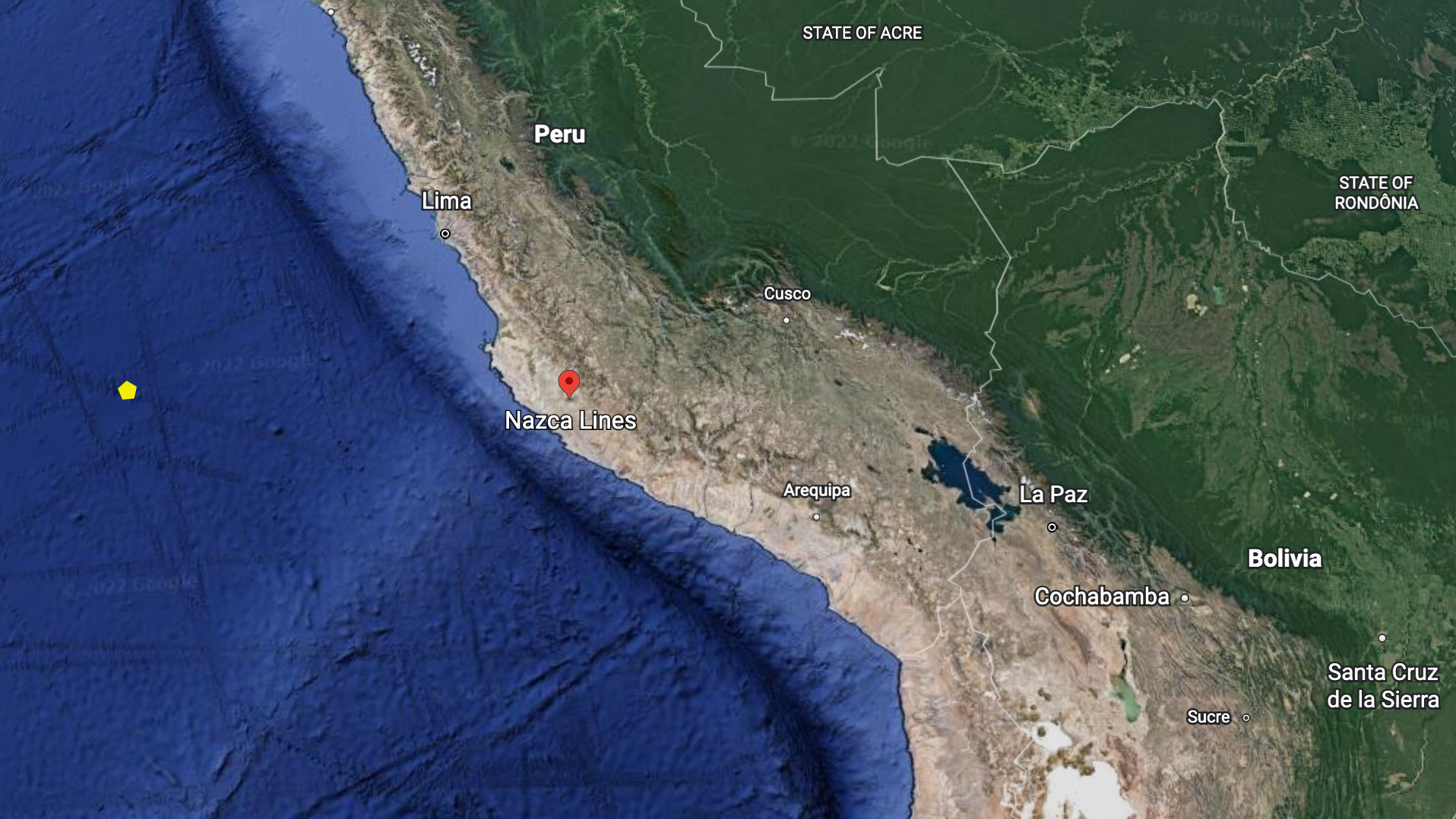Odd circular shape beneath the ocean in Google Earth images is probably not aliens
Here's the real science behind the seafloor 'UFO.'

A circular shape on the seafloor visible on Google Earth is raising cries of "UFO," but chances are … it's not aliens.
The sighting comes courtesy of Scott Waring, proprietor of UFOsightingsdaily.com and frequent discoverer of objects that he dubs "100% proof" of ancient aliens. (He's also an avid peruser of photographs from NASA's rovers, and he has claimed to find everything from a monkey on Mars to the 24-foot-tall (7.3 meters) body of a Martian monarch killed in battle 1 million years ago.) Upping the UFO ante, the shape is located off the coast, sort of near Peru's Nazca Lines, a series of enormous geoglyphs built by the Nazca people almost 2,000 years ago. These lines are a common fixation for conspiracy theorists, who sometimes claim aliens were involved in their construction.
So, what did Waring find? A circle, some 4.2 miles (6.8 kilometers) in diameter, visible about 352 miles (566 km) off the coast of Lima. The circle appears to rise from the seafloor like a hill or mountain.
Related: 7 things most often mistaken for UFOs

Most likely, though, this ocean floor nubbin is a data artifact. Strange shapes can appear for many reasons on the ocean floor in Google Earth. The company uses data from multiple sources to map out the seafloor. These sources have different resolutions, or levels of details, and when they are stitched together, strange shapes sometimes appear.
In a 2016 blog post, Google developers pointed out one data quirk that can lead to strange hill-and-valley artifacts: The background map of the ocean floor is based on a map made by the Scripps Institution of Oceanography, which uses gravity measurements from satellites to roughly map out the ups and downs of the seafloor (also known as the ocean's bathymetry).
For more detailed mapping, the company gets data from ship-based sonar surveys. These sonar surveys send pulses of sound down toward the ocean floor, then record the echoes to get a high-resolution picture. At times, the rough satellite-based measurements and the shipboard measurements don't agree, and a single point of data from one or the other can lead to what looks like a steep hill or dip.
Get the Space.com Newsletter
Breaking space news, the latest updates on rocket launches, skywatching events and more!
Notably, the "UFO" spotted by Waring sits right in the middle of a transect line where a shipboard sonar survey has clearly passed, making it possible that the shape is a side effect of stitching together multiple data sources. These long lines are visible all across the ocean floor on Google Earth, and are sometimes mistaken for signs of a lost civilization.
Odd ocean floor shapes on Google Earth illustrate just how little is known about the seafloor. The satellite imagery that covers almost the entire ocean floor can resolve features down to about 0.9 miles (1.5 km), while modern seafloor sonar can reveal details on the order of 328 feet (100 m). According to the U.S. National Oceanic and Atmospheric Administration, only 5% of the ocean floor has been mapped by modern sonar.
Originally published on Live Science.
Follow us on Twitter @Spacedotcom or on Facebook.
Join our Space Forums to keep talking space on the latest missions, night sky and more! And if you have a news tip, correction or comment, let us know at: community@space.com.

Stephanie Pappas is a contributing writer for Space.com sister site Live Science, covering topics ranging from geoscience to archaeology to the human brain and behavior. She was previously a senior writer for Live Science but is now a freelancer based in Denver, Colorado, and regularly contributes to Scientific American and The Monitor, the monthly magazine of the American Psychological Association. Stephanie received a bachelor's degree in psychology from the University of South Carolina and a graduate certificate in science communication from the University of California, Santa Cruz.










